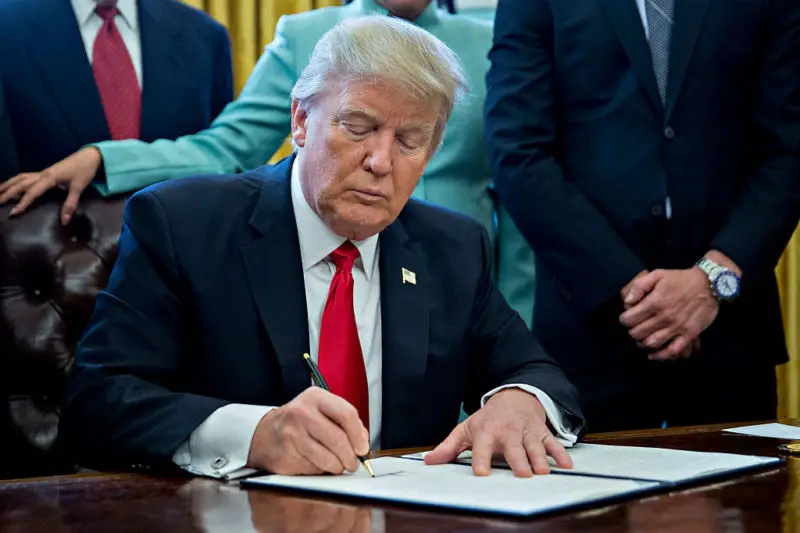In the wake of President Donald Trump’s most recent “repeal and replace” call to action of former President Barack Obama’s Clean Power Plan (CPP), we should take the time to reflect on the action itself and what it reveals about the character of Trump’s administration instead of either continuing only to criticize or praise these actions. Although Trump’s administration is working diligently to bring reform to Americans and to abide by one of his major campaign philosophies, “America First,” repealing and replacing all of Obama’s reforms will, at best, be a tedious task to bring improved legislation to Americans, but at worst, is downright disrespectful. Respecting the legacies that former political leaders such as Obama worked hard to establish is the right thing to do—it almost doesn’t need to be said. However, it too must be said that when the former administration establishes flawed reforms, it is necessary for the current administration to improve upon these reforms.
I want to suggest another way to assess the legacy of a politician: A great political leader is one who leaves a mark on the average citizen’s life. Before we continue to criticize Trump’s administration further for undoing reforms under Obama’s administration, it is vital to measure the value of Obama-era reforms and the Trump administration’s proposed reforms in how they change or will change the lives of the average American citizen.
On October 10, the Environmental Protection Agency (EPA) administrator Scott Pruitt announced that he will sign a new rule overriding the CPP, an Obama-era effort to limit carbon dioxide emissions from power plants. This past June, Trump announced his intention of repealing the plan, arguing that it put fellow Americans at an “economic disadvantage.” Trump’s administration plans to exit the global climate change conversation by removing the U.S. from the Paris Climate Accord—a move which was at the forefront of the “America First” campaign.
While at Whayne Supply in Hazard, Kentucky, alongside Senate Majority Leader Mitch McConnell, Pruitt said, “The EPA and no federal agency should ever use its authority to say to you we are going to declare war on any sector of our economy. The war on coal is over.” GOP members are considering enacting their own reforms on environmental regulation, but have not made any definitive motions yet.
On August 3, 2015, the EPA confirmed a new set of carbon emission standards to reduce America’s carbon footprint. Climate change experts celebrated the CPP as a major effort to combat climate change under President Barack Obama’s administration, where in previous years there existed no such standards. Within each state, the CPP established target goals for carbon dioxide emission reductions. Aspiring to reach a national target goal by 2030, the plan would reduce national electricity emissions by an estimated 32 percent below levels recorded in 2005. In anticipation of cleaner air in America, Obama-era EPA staff estimated that the CPP would prevent about ninety thousand child asthma attacks and three thousand six hundred premature deaths a year. In other words, the CPP was a plan that intended on reducing America’s carbon footprint which would improve American well-being and health.
The CPP would also have kept the U.S. on track with its commitments to reduce its carbon dioxide emissions, as outlined in the Paris climate agreement—an agreement between the United Nations Framework Convention on Climate Change (UNFCCC) to lower greenhouse gas emissions globally.
Some believe that, despite America’s withdrawal from the accords, it’s highly unlikely to have an impact on the global effort to reduce greenhouse gas emissions. Marlo Lewis Jr., a contributor to the Washington Examiner, outlines that if the U.S. complied with CPP goals, by 2100, the U.S. will have contributed a loss of 0.02 degrees Celsius; the amount in 2030 being significantly smaller. Not only that, but the impact that Obama’s CPP would have on the average American is inhibiting: The Heritage Foundation estimated the plan would reduce annual employment by four hundred and seventy-nine thousand jobs in 2027, reduce cumulative GDP by hundreds of billions of dollars between 2020 and 2030, and reduce cumulative household income by more than $10,000.
There is always more than one side to any story and Trump administration’s “repeal and replace” imperatives on Obama-era reforms is no exception to this rule. Some people have likened Trump’s recent repeal of Obama’s CPP to other attempts of repealing Obama-era policies such as the Affordable Healthcare Act (ACA). Whereas average American citizens, and by extension citizens from around the world, would not see tangible benefits with the CPP, ACA did offer Americans a functional start to a new healthcare system.
While the ACA may be controversial, it has also served as a good stride on the path to improving the American healthcare system. It slows the rising cost of healthcare by providing insurance to Americans and ensuring that they receive treatment before requiring expensive emergency room services. The ACA provides health benefits in ten essential areas; insurance to an additional three million Americans, children can stay on their parents’ health insurance until the age of twenty-six. The middle class receives tax credits on their premiums. Businesses with more than fifty employees must offer health insurance.
However, the reason behind this “repeal and replace” call to action lies in the faultiness of the Affordable Healthcare Act. Since major insurers such as Blue Cross Blue Shield, United Healthcare and Aetna are leaving the scene because of instability, there is a lack of in-state insurance companies. In addition to the lack of insurance companies in the market, Obamacare’s rising premiums and deductibles, the amount Americans need to pay before they start to share the costs with insurance companies, make it difficult for Americans to afford health insurance. In fact, roughly 11-12 percent of Americans (twenty-six to twenty-eight million) are uninsured under Obamacare. ACA has also brought with it the dual issues of higher wait times in emergency rooms and a shortage of doctors.
Two stories are taking place simultaneously when reading the “repeal and replace” headlines. First, the Trump administration’s bravado shows its decisive actions to remove Obama-era reforms. Secondly, Trump’s desire to establish a legacy as an American president is revealed—moving behind his persona as an American business mogul, even though the two positions often blur.
Although repealing the CPP is controversial enough since climate change is a tangible phenomenon, there is still hope for this administration and hope in the American people. I’m not saying to turn a blind eye to everything Trump’s administration does now since this leaves no room for improvement. Rather, it’s time to consider how his administration is serving the American populace rather than criticizing or commending it without careful reflection.

















